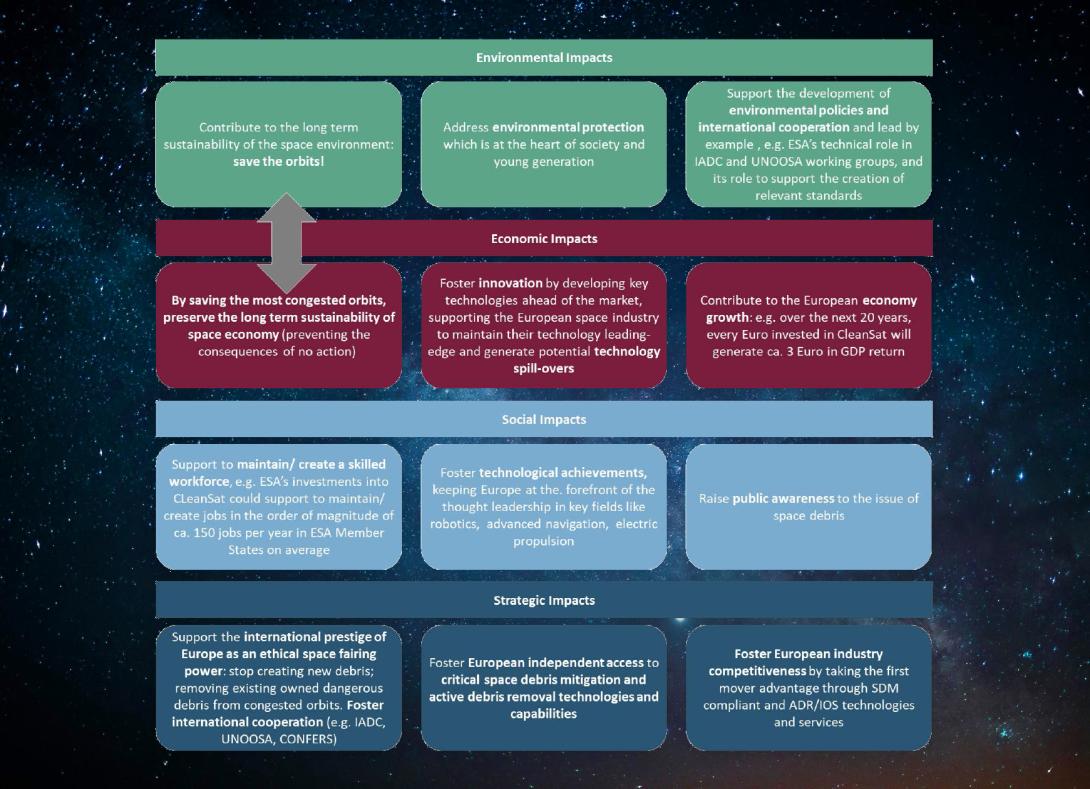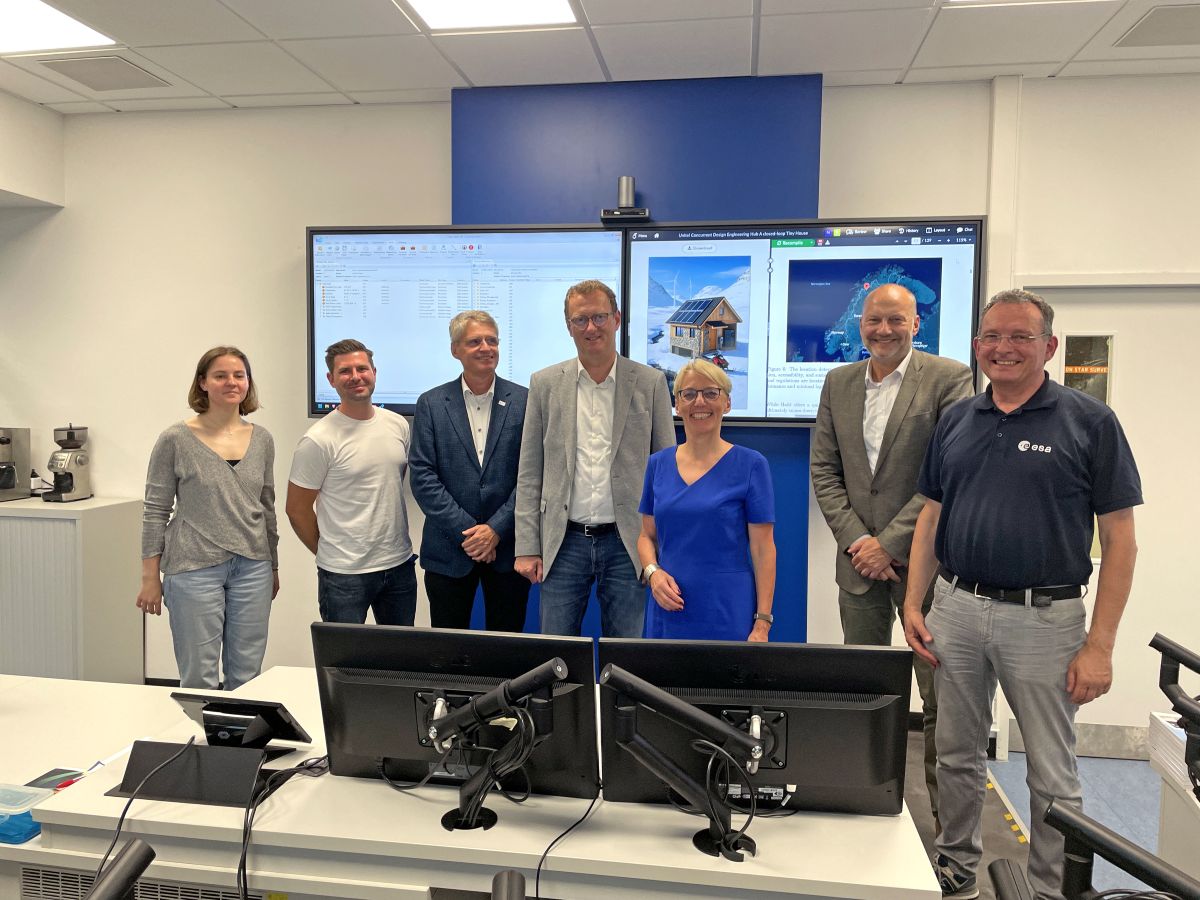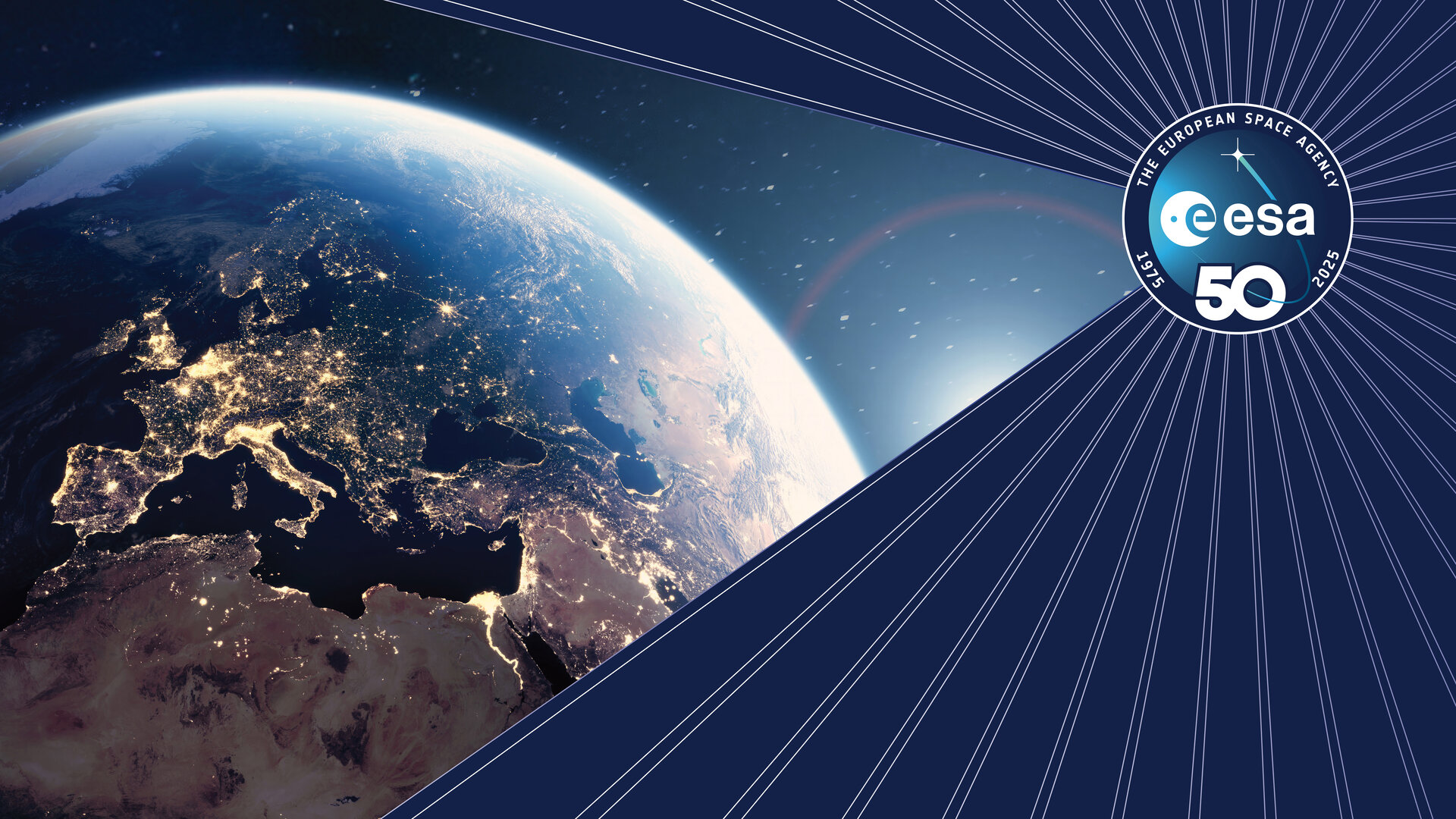Ex-Ante Socio-Economic Impact Assessment of the European Space Agency’s Clean Space Initiative
The role of space systems in the functioning of modern societies, their strategic intent and their economic development is increasing thanks to the use of satellite technology in navigation, communications, meteorology and Earth observation.
Space technologies also affect security and surveillance, agriculture planning, disaster management, medicine, land monitoring, transportation and urban planning. Its manifold fields of application make space an engine of economic growth. As such, the relevance of space debris risks has never been higher.
As of January 2019, there are approximately 1950 active spacecraft orbiting the Earth7, a significant number of inactive satellites no longer under control (approx. 30002), and a large number of catalogued debris (approx. 22,3002) resulting from space missions. Furthermore, there are more than 750,000 pieces of debris in orbit with a size larger than 1 cm, which are all potentially mission-ending.
The global space industry is going through a period of reinvention. The satellite industry is seeing rapid growth in the number of small satellites, as vast constellations consisting of hundreds (or even thousands) of satellites for Earth observation and telecommunications are being ordered and built. In the next 20 years, over 23,000 satellites are forecasted to be launched, 96% of which in LEO.

The probability of catastrophic collisions will grow
Because of the rising object count, the probability of catastrophic collisions will also grow. Space debris is, in fact, already a very real problem for operators. Collision avoidance manoeuvres have to be made daily to avoid catastrophic events from happening such as that which occurred in 2009 between Iridium 33 and Kosmos 2251.
In addition, previous studies showed, that the removal of as few as 5 of the highest risk objects per year from LEO can stabilise the long-term LEO debris environment.
The sooner that starts to happen, the better, as this would enable the reduction of potential exponential increases in debris. In fact, this should begin now, as ESA’s internal studies show that continuous removal actions starting in 2060 would be 25% less effective in comparison to an immediate start, due to the continuous number of collisions and explosions that would occur before.

Long-term sustainability of space activities
ESA’s Clean Space initiative stands to support the preservation of the long-term sustainability of space activities in space and on Earth, and to foster the European industry to stay competitive in the rapidly evolving global space market. The scope of the Clean Space Initiative, which started in 2012, is to mature technologies to address space debris mitigation and remediation and other hazards across the space industry development chain.
The performed socio-economic impact assessment of Clean Space demonstrates that there are significant environmental, economic, social and strategic benefits in pursuing Clean Space activities.
The study has identified the following benefits of ESA’s Clean Space initiative’s in the future:
- Environmental preservation and sustainable use of orbits
- Enhancement of European industry competitiveness
- Development of key technologies to be first to market



